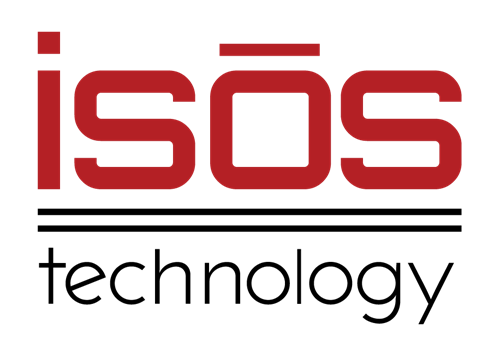 Key Takeaways
Key Takeaways
- Comprehensive Framework: Cloud data governance provides essential policies, processes, and technologies to ensure Atlassian data remains secure, compliant, and high-quality throughout its lifecycle in cloud environments.
- Strategic Implementation: Organizations should establish clear governance frameworks, implement robust data classification, focus on security and privacy, ensure cross-border compliance, and leverage automation tools for effective governance.
- Atlassian-Specific Considerations: Understanding Atlassian's data residency options, compliance capabilities, security features, and Forge platform is crucial for successful cloud migrations while maintaining proper governance.
- Business Benefits: Effective cloud data governance delivers enhanced security, improved decision-making, regulatory compliance, cost optimization, and support for innovation and business growth.
- Future-Ready Approach: Organizations should prepare for emerging trends in governance, including AI automation, real-time capabilities, integration with development processes, balanced data democratization, and multi-cloud strategies.
Cloud data governance has become critical for organizations transitioning their Atlassian environments to the cloud. As businesses embrace cloud solutions for cost savings, scalability, and global data sharing capabilities, establishing robust governance frameworks ensures data remains secure, compliant, and high-quality throughout its lifecycle. Organizations can confidently migrate Atlassian data with proper governance strategies while maintaining regulatory compliance and operational efficiency.
What is Cloud Data Governance?
Cloud data governance comprises comprehensive policies, processes, and technologies that ensure your data in cloud environments is secure, compliant, and effectively utilized. This governance framework establishes rules for managing your organization's data library, allowing you to control data access, retention, and protection across cloud platforms.
A robust cloud data governance strategy helps organizations maintain data quality, minimize security risks, and maximize the value of their data assets. For Atlassian users considering cloud migration, understanding governance principles is essential for protecting sensitive information and meeting compliance requirements.
"Cloud data governance is essentially a set of policies, processes, and technologies that ensure your data in the cloud is secure, compliant, and used effectively," explains Airbyte, emphasizing that it "allows you to govern data access, retention, and protection."
Key Components of Cloud Data Governance Frameworks
A comprehensive cloud data governance framework includes several critical components that work together to ensure data security, compliance, and quality:
- Data Security and Privacy: Implementing encryption, access controls, and audit mechanisms to protect sensitive information from unauthorized access or breaches. These security measures are fundamental for maintaining data integrity in cloud environments.
- Compliance and Regulatory Requirements: Establishing policies that adhere to legal standards such as GDPR, HIPAA, CCPA, and industry-specific regulations. This component ensures organizations avoid penalties while building trust with stakeholders.
- Data Quality Management: Ensuring data accuracy and consistency through validation processes, data cleansing, and regular auditing. High-quality data supports effective decision-making and operational efficiency.
- Data Access Control: Using role-based access controls to restrict data access based on user roles and responsibilities. This prevents unauthorized access while ensuring appropriate personnel can utilize necessary data resources.
- Data Lifecycle Management: Managing data from creation to deletion helps reduce costs and risks associated with data storage and handling. This component optimizes resource utilization throughout the data lifecycle.
"The key components of a cloud data governance framework ensure that data in cloud environments is managed securely and efficiently," notes Secoda, highlighting that "these elements create a comprehensive strategy for managing cloud-based data assets."
Cloud Data Governance Best Practices for Atlassian Migration
When preparing to migrate Atlassian data to the cloud, implementing best practices for data governance is essential for maintaining security, compliance, and operational efficiency.
Establish a Strategic Governance Framework
Developing a comprehensive governance framework tailored to your organization's needs is the foundation of effective cloud data governance. This framework should:
- Define clear policies and procedures for data classification, storage, access, and usage
- Establish roles and responsibilities for data management
- Create decision-making processes and escalation paths for addressing data-related issues
- Align with industry regulations and business objectives
- Remain scalable and adaptable to accommodate changing requirements
"Establishing a comprehensive governance framework is crucial for managing data in the cloud," states Alation. "This framework should encompass policies, procedures, and guidelines that govern data access, usage, security, and compliance."
Implement Robust Data Classification and Cataloging
Proper data classification and cataloging are essential for maintaining order and facilitating data discovery in cloud environments. Organizations should:
- Implement automated data discovery and classification tools
- Establish consistent classification criteria based on data sensitivity and regulatory requirements
- Maintain centralized data catalogs to document datasets and metadata
- Ensure proper labeling of sensitive information
- Regularly review and update classifications as data evolves
"In the vast landscape of cloud data, proper cataloging and classification are essential for maintaining order and facilitating data discovery," explains Alation. "Modern data catalogs continuously analyze metadata, enabling organizations to classify data assets accurately and consistently."
Focus on Data Security and Privacy
Protecting sensitive data is paramount in cloud environments, particularly when migrating Atlassian instances containing proprietary information, customer data, or intellectual property. Best practices include:
- Implementing encryption for data at rest and in transit
- Establishing strong access controls with multi-factor authentication
- Conducting regular security assessments and vulnerability scans
- Implementing data masking for sensitive information
- Maintaining comprehensive audit trails for data access and modifications
"Best practices for data security in the cloud include defining and discovering sensitive data, classifying and labeling data, encrypting data at rest and in transit, and implementing strong access controls," advises Wiz.
Ensure Cross-Border Compliance
With data potentially crossing international boundaries in cloud environments, organizations must navigate complex regulatory landscapes:
- Understand data sovereignty requirements in relevant jurisdictions
- Implement data residency controls to ensure data remains in approved regions
- Conduct regular compliance audits against applicable regulations
- Document compliance measures for regulatory reporting
- Stay informed about evolving regulatory requirements
"As data transcends geographical boundaries in the cloud, organizations must navigate the complexities of data sovereignty and cross-border data movement," notes Alation. "Effective data governance ensures compliance with these regulations, mitigating the risk of costly penalties and reputational damage."
Leverage Automation and Modern Tools
Manual processes are inadequate for managing the volume and complexity of data in cloud environments. Organizations should:
- Implement data catalogs and metadata management solutions
- Utilize automated workflows for data governance processes
- Deploy machine learning algorithms to identify anomalies and policy violations
- Implement continuous monitoring tools for data quality and compliance
- Integrate governance tools with existing systems and workflows
"In today's data-driven landscape, manual processes and traditional governance methods are often inadequate for managing the volume, velocity, and variety of data in the cloud," states Alation. "Leveraging automation and modern tools is essential for streamlining governance processes and ensuring scalability and efficiency."
Atlassian Cloud Data Governance Considerations
Organizations must address specific data governance considerations when migrating to Atlassian Cloud to ensure compliance, security, and operational efficiency.
Understanding Atlassian's Data Residency Options
Atlassian offers data residency capabilities as part of its Cloud platform, enabling organizations to choose where their data is stored. This feature is crucial for meeting regulatory requirements and optimizing performance:
- Available regions include the U.S., Europe, Australia, and more locations
- Data residency supports compliance with regulations like GDPR and HIPAA
- Regional storage improves performance by reducing latency for local teams
- Atlassian's infrastructure provides robust security for stored data
- Organizations can maintain data sovereignty while leveraging cloud benefits
"Atlassian offers data residency capabilities as part of its Cloud platform, enabling organizations to choose where their data is stored," explains TitanApps. "Currently, supported regions include the U.S., Europe, Australia, and more, with additional locations being rolled out to meet global demand."
Compliance and Regulatory Framework Alignment
Atlassian Cloud offers various compliance certifications and features to help organizations meet regulatory requirements:
- SOC2 and ISO 27001 compliance certifications
- GDPR compliance capabilities
- Data encryption at rest and in transit
- Regular security audits and assessments
- Comprehensive access controls and authentication mechanisms
"Atlassian will provide Cloud Computing Compliance Criteria Catalog (C5) Type 1 attestation in Q2 2025," according to Atlassian's Cloud Roadmap, demonstrating their ongoing commitment to expanding compliance capabilities.
Cloud Security and Data Protection
Security is a primary concern when migrating Atlassian data to the cloud. Key security features include:
- Advanced encryption for data protection
- Role-based access controls for granular permissions
- Regular security updates and patches
- Threat detection and prevention mechanisms
- Disaster recovery and business continuity features
"Data hosted on Atlassian Cloud is backed by AWS, one of the most secure cloud providers in the industry," notes TitanApps. "This includes advanced redundancy capabilities, data encryption, and compliance with global standards like GDPR, SOC 2, and ISO 27001."
Leveraging Forge Apps for Enhanced Governance
Atlassian's Forge platform provides a secure environment for app development that aligns with data governance requirements:
- Serverless architecture eliminates the need to manage servers
- Apps can comply with Atlassian's data residency policies
- Security by design keeps data processing within Atlassian's infrastructure
- "Runs on Atlassian" badge signifies apps with no data egress
- Automatic app updates reduce administrative overhead
"Forge is Atlassian's next-generation platform for building apps that seamlessly integrate with Atlassian Cloud," explains TitanApps. "Unlike older systems like Connect, Forge provides a secure environment where data can be processed and stored entirely within Atlassian's infrastructure."
Data Migration Best Practices
When migrating data to Atlassian Cloud, organizations should follow these best practices:
- Start planning early to identify potential risks and compliance requirements
- Conduct a thorough audit of existing data before migration
- Utilize Atlassian's migration support resources and tools
- Partner with experienced Atlassian Solution Partners for complex migrations
- Test migration processes in a controlled environment before full implementation
"Migration requires thorough planning to identify potential risks and ensure compliance," advises TitanApps. "Begin by auditing your current setup to evaluate necessary adjustments and areas requiring optimization."
Overcoming Cloud Data Governance Challenges
Implementing effective cloud data governance has several challenges that organizations must address to ensure successful Atlassian migrations.
Data Quality and Consistency
As data proliferates in cloud environments, maintaining quality and consistency becomes increasingly complex:
- Implement automated data profiling and validation rules
- Establish data quality metrics and monitoring processes
- Conduct regular data cleansing and enrichment
- Define clear data standards and formats
- Implement master data management practices
"As data proliferates in the cloud, ensuring accuracy becomes increasingly complex," notes Alation. "Inconsistent, incomplete, or duplicate data can lead to flawed decisions."
Vendor Lock-in and Cost Management
Cloud migrations can lead to vendor dependencies and unexpected costs if not properly managed:
- Negotiate flexible contracts with clear exit strategies
- Adhere to open standards and portable data architectures
- Implement cost optimization strategies like rightsizing and auto-scaling
- Establish chargeback models for accurate cost allocation
- Regularly review and optimize cloud resource utilization
"The diverse cloud market can lead to vendor lock-in, limiting flexibility," warns Alation. "Mitigate risks through flexible contracts, adherence to open standards, and portable data architectures."
Cross-Functional Collaboration
Effective cloud data governance requires collaboration across various teams and stakeholders:
- Establish cross-functional governance committees
- Define clear roles and responsibilities for data management
- Implement collaborative tools for data governance
- Provide training and education on governance principles
- Foster a culture of data responsibility throughout the organization
"Cloud data governance is not a siloed effort; it requires collaboration across various teams and stakeholders," emphasizes Alation. "Cross-functional collaboration fosters a shared understanding of data governance principles and facilitates the exchange of knowledge and best practices."
Balancing Security with Accessibility
Organizations must strike a balance between protecting data and ensuring it remains accessible to authorized users:
- Implement least privilege access principles
- Utilize data masking and tokenization for sensitive information
- Establish explicit data access request and approval processes
- Provide self-service access to non-sensitive data
- Regularly review and audit access permissions
"While data democratization promotes broader access to data, it is crucial to implement controlled access mechanisms to prevent data leakage and ensure that data is used for its intended purpose," advises Alation.
Adapting to Evolving Regulations
The regulatory landscape for data protection continues to evolve, requiring organizations to stay informed and adaptable:
- Monitor regulatory changes in relevant jurisdictions
- Implement flexible governance frameworks that can adapt to new requirements
- Conduct regular compliance assessments
- Document compliance measures and maintain evidence
- Engage with legal experts to interpret regulatory impacts
"With data crossing international boundaries, organizations must navigate a web of regional and global regulations," states Alation. "Ensure compliance with standards like GDPR and CCPA by implementing governance frameworks that address data residency, conducting regular audits, and collaborating with legal experts."
Benefits of Effective Cloud Data Governance
Implementing robust data governance for Atlassian Cloud migrations delivers numerous benefits beyond compliance and security.
Enhanced Data Security and Risk Mitigation
Effective governance protects against data breaches, unauthorized access, and potential data loss:
- Comprehensive security controls reduce the risk of data breaches
- Clear access policies prevent unauthorized data access
- Regular audits identify and address potential vulnerabilities
- Disaster recovery capabilities ensure business continuity
- Incident response procedures minimize the impact of security events
"Cloud data governance protects against data breaches, unauthorized access, and potential data loss," explains Airbyte. "It protects sensitive information by implementing encryption, access controls, regular audits, and disaster recovery plans."
Improved Decision-Making and Operational Efficiency
High-quality, well-governed data supports better business decisions and streamlined operations:
- Consistent, accurate data improves analysis and reporting
- Reduced data silos enhance information sharing
- Streamlined data access accelerates decision-making processes
- Automated governance processes reduce manual effort
- Clear data lineage improves understanding of information sources
"By ensuring consistency and accuracy, data governance can boost productivity and efficiency across various departments," notes Secoda. "It also facilitates strategic planning by providing improved access to information, allowing management to formulate plans that align with stakeholder interests."
Regulatory Compliance and Reduced Legal Risk
Governance frameworks help organizations navigate complex regulatory requirements:
- Demonstrated compliance with data protection regulations
- Reduced risk of penalties and fines
- Documentation of compliance measures for audits
- Ability to respond quickly to regulatory changes
- Enhanced trust from customers and partners
"Cloud data governance helps you manage the complexities of data protection laws such as GDPR, HIPAA, and CCPA," states Airbyte. "By adhering to these regulations, you not only avoid severe fines and legal repercussions but also build trust with customers and partners who value your commitment to data privacy."
Cost Optimization and Resource Efficiency
Well-governed data environments operate more efficiently and cost-effectively:
- Reduced storage costs through proper data lifecycle management
- Optimized resource allocation based on data usage patterns
- Decreased costs associated with poor data quality
- Minimized duplicate data storage
- Efficient data retrieval and processing
"Cloud governance transforms data management from a manual, error-prone, and expensive approach to an automated, efficient, and proactive one," explains Airbyte. "This shift reduces operational costs by automating routine tasks and reducing errors while enhancing overall data handling efficiency, making it a good investment."
Innovation and Business Growth
Strong governance enables organizations to leverage data for innovation and competitive advantage:
- Improved data availability for analytics and AI initiatives
- Enhanced ability to identify market trends and opportunities
- Faster development of data-driven products and services
- Better understanding of customer needs and behaviors
- Increased agility in responding to market changes
"A well-structured data environment enables you to gain valuable insights, identify emerging trends, and make data-driven decisions that drive growth," notes Airbyte. "This adaptability allows you to respond quickly to market changes and customer needs, fostering a culture of innovation and staying ahead of the competition."
The Future of Cloud Data Governance for Atlassian
As organizations embrace cloud technologies, the data governance landscape is evolving to address new challenges and opportunities.
AI and Automation in Governance
Artificial intelligence and machine learning are transforming how organizations approach data governance:
- AI-powered data classification and categorization
- Automated policy enforcement and compliance monitoring
- Predictive analytics for identifying potential governance issues
- Natural language processing for data discovery and cataloging
- Machine learning algorithms for anomaly detection and risk assessment
"Cloud data governance is rapidly transforming thanks to emerging technologies like artificial intelligence (AI) and machine learning," explains Alation. "These tools automate tasks such as metadata analysis, data classification, and quality checks, enabling organizations to manage vast data assets more efficiently."
Real-Time Governance Capabilities
The need for continuous monitoring and enforcement is driving the development of real-time governance tools:
- Continuous data quality monitoring and alerting
- Real-time policy enforcement and compliance checking
- Immediate detection of unauthorized access attempts
- Automated remediation of governance violations
- Dynamic access controls based on contextual factors
"Real-time governance capabilities are becoming essential, allowing businesses to quickly adapt to regulatory changes and respond to data breaches, thus reducing the risk of non-compliance," notes Alation.
Integration with DevOps and DataOps
Data governance is increasingly being integrated with development and operational processes:
- Governance-as-code approaches for automated implementation
- Integration of governance controls into CI/CD pipelines
- Shift-left governance testing in development workflows
- Collaborative platforms for governance and operations teams
- Continuous governance improvement through feedback loops
This integration ensures that governance requirements are considered throughout the data lifecycle, from development to deployment.
Enhanced Data Democratization with Governance
Organizations are finding ways to balance data access with appropriate controls:
- Self-service data access with built-in governance controls
- Automated approval workflows for data access requests
- Context-aware data protection based on usage patterns
- Personalized data views based on user roles and permissions
- Transparent governance policies are accessible to all users
"As the regulatory landscape evolves and the demand for real-time governance grows, automation and tools like data catalogs will be indispensable for continuously monitoring and enforcing data standards," states Alation. "Effective governance mitigates risks and empowers data democratization—ensuring that the right users have secure, appropriate access."
Multi-Cloud and Hybrid Governance Strategies
As organizations adopt multi-cloud and hybrid environments, governance strategies must adapt:
- Consistent governance policies across cloud providers
- Centralized visibility into distributed data assets
- Unified compliance monitoring across environments
- Standardized security controls for all cloud platforms
- Portable governance frameworks that work across ecosystems
These strategies ensure that data governance remains effective regardless of where data resides, providing a consistent security, compliance, and quality approach.
FAQs About Cloud Data Governance for Atlassian Migration
What is cloud data governance, and why is it essential for Atlassian migrations?
Cloud data governance is a framework of policies, processes, and technologies that ensure data in cloud environments is secure, compliant, and effectively managed. For Atlassian migrations, governance is crucial because it helps organizations maintain control over sensitive information, meet regulatory requirements, and ensure data quality throughout the migration process and beyond.
How does Atlassian Cloud support data residency requirements?
Atlassian Cloud offers data residency options that allow organizations to specify where their data is stored geographically. Currently supported regions include the U.S., Europe, Australia, and other locations. This capability helps organizations comply with regulations like GDPR, which may require data storage in specific regions. Atlassian continues to expand its supported regions to meet global demand.
What security measures does Atlassian Cloud implement for data protection?
Atlassian Cloud implements multiple security measures, including data encryption at rest and in transit, role-based access controls, regular security updates, and compliance with standards like SOC2 and ISO 27001. Additionally, Atlassian Cloud is built on AWS infrastructure, providing robust security capabilities and redundancy features to protect customer data.
How can organizations ensure compliance with regulations when using Atlassian Cloud?
Organizations can ensure compliance by leveraging Atlassian's data residency features, implementing appropriate access controls, utilizing encryption features, conducting regular security assessments, and documenting compliance measures. Additionally, organizations should stay informed about Atlassian's compliance certifications and roadmap for upcoming compliance features.
What is Forge, and how does it enhance data governance in Atlassian Cloud?
Forge is Atlassian's serverless app development platform that enhances data governance by allowing apps to process and store data within Atlassian's infrastructure. This approach supports data residency compliance, reduces security risks associated with external data processing, and simplifies app management. Apps developed on Forge can qualify for the "Runs on Atlassian" badge, indicating they maintain data within Atlassian's secure ecosystem.
What are the best practices for data classification in cloud environments?
Best practices for data classification include establishing clear classification policies, implementing automated discovery and classification tools, consistently applying classification labels, regularly reviewing and updating classifications, and training users on classification procedures. Classification should be based on data sensitivity, regulatory requirements, and business value.
How can organizations balance data accessibility with security in Atlassian Cloud?
Organizations can balance accessibility and security by implementing role-based access controls, utilizing data masking for sensitive information, establishing transparent data access request processes, providing self-service access to non-sensitive data, and regularly auditing access permissions. The goal is to ensure authorized users can access the data they need while preventing unauthorized access to sensitive information.
What steps should organizations take before migrating to Atlassian Cloud?
Before migrating, organizations should conduct a thorough data audit, identify compliance requirements, establish governance policies, assess security controls, test migration processes, train users on cloud governance procedures, and develop a detailed migration plan. Working with experienced Atlassian Solution Partners can help ensure a smooth transition while maintaining proper governance.
How does cloud data governance impact the overall cost of Atlassian Cloud adoption?
While implementing governance may require initial investment, it typically reduces long-term costs by preventing data breaches, improving data quality, optimizing storage through proper lifecycle management, reducing duplicate data, and avoiding compliance penalties. Effective governance also improves operational efficiency, enhancing the return on investment in cloud technologies.
What emerging trends will shape cloud data governance in the coming years?
Emerging trends include increased automation through AI and machine learning, real-time governance capabilities, integration with DevOps and DataOps practices, enhanced data democratization with built-in governance controls, and multi-cloud governance strategies. These trends will help organizations maintain effective governance while adapting to evolving technologies and regulatory requirements.
Sources:
Secoda
Airbyte
Alation
TitanApps
Atlassian Cloud Roadmap
Sign up to receive more great content
Learn more about Atlassian and how Isos can help by signing up to receive our latest blogs, eBooks, whitepapers and more.













